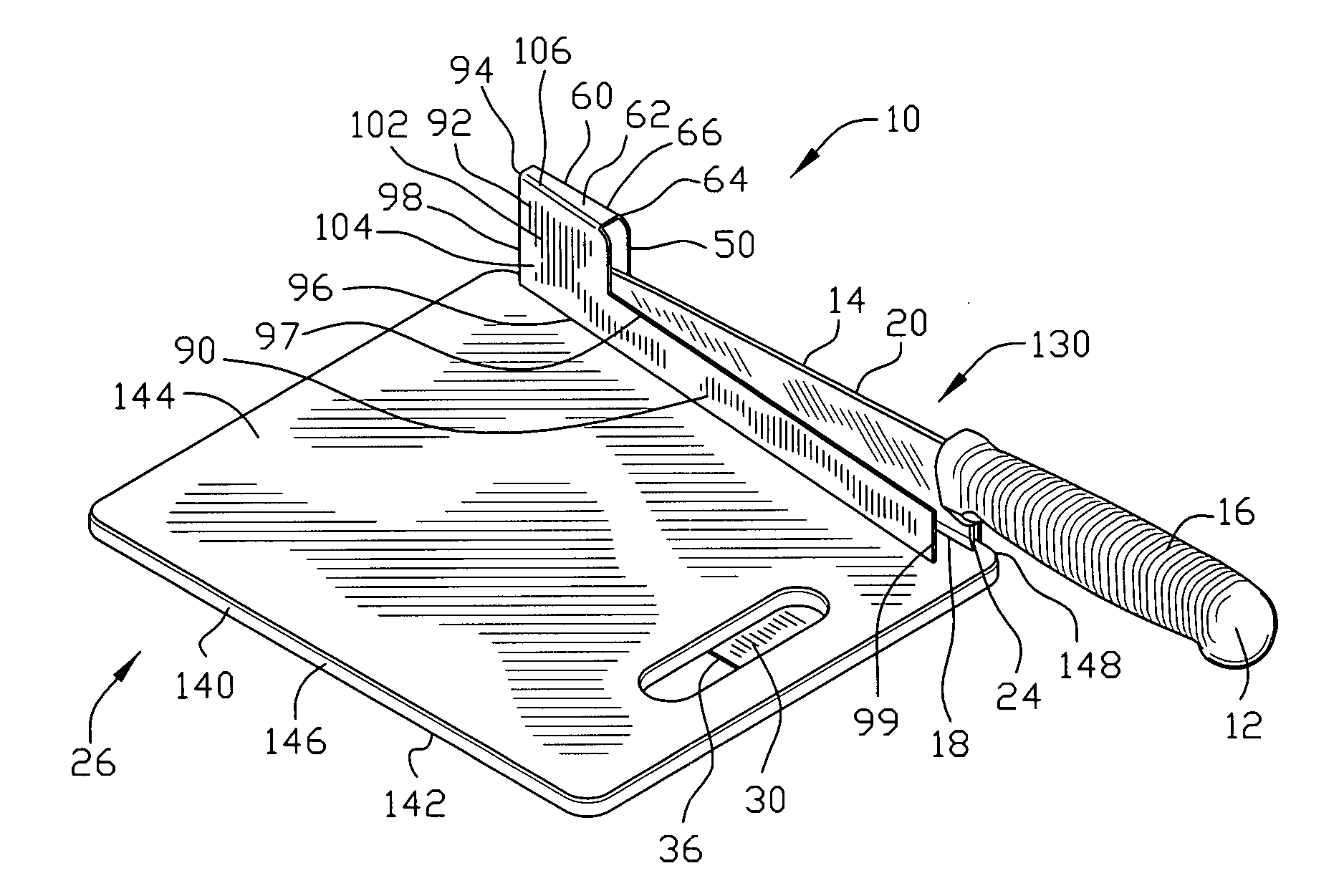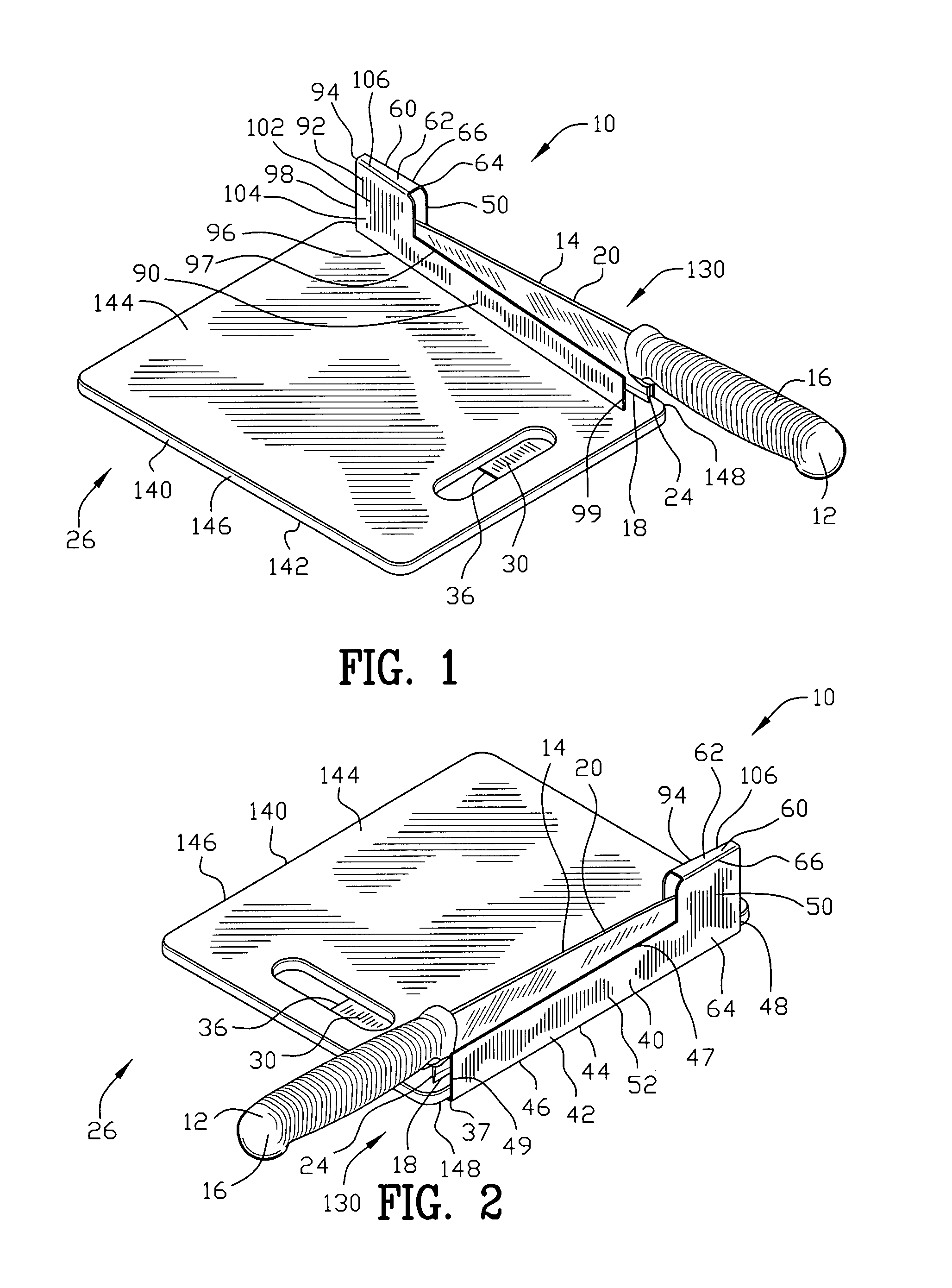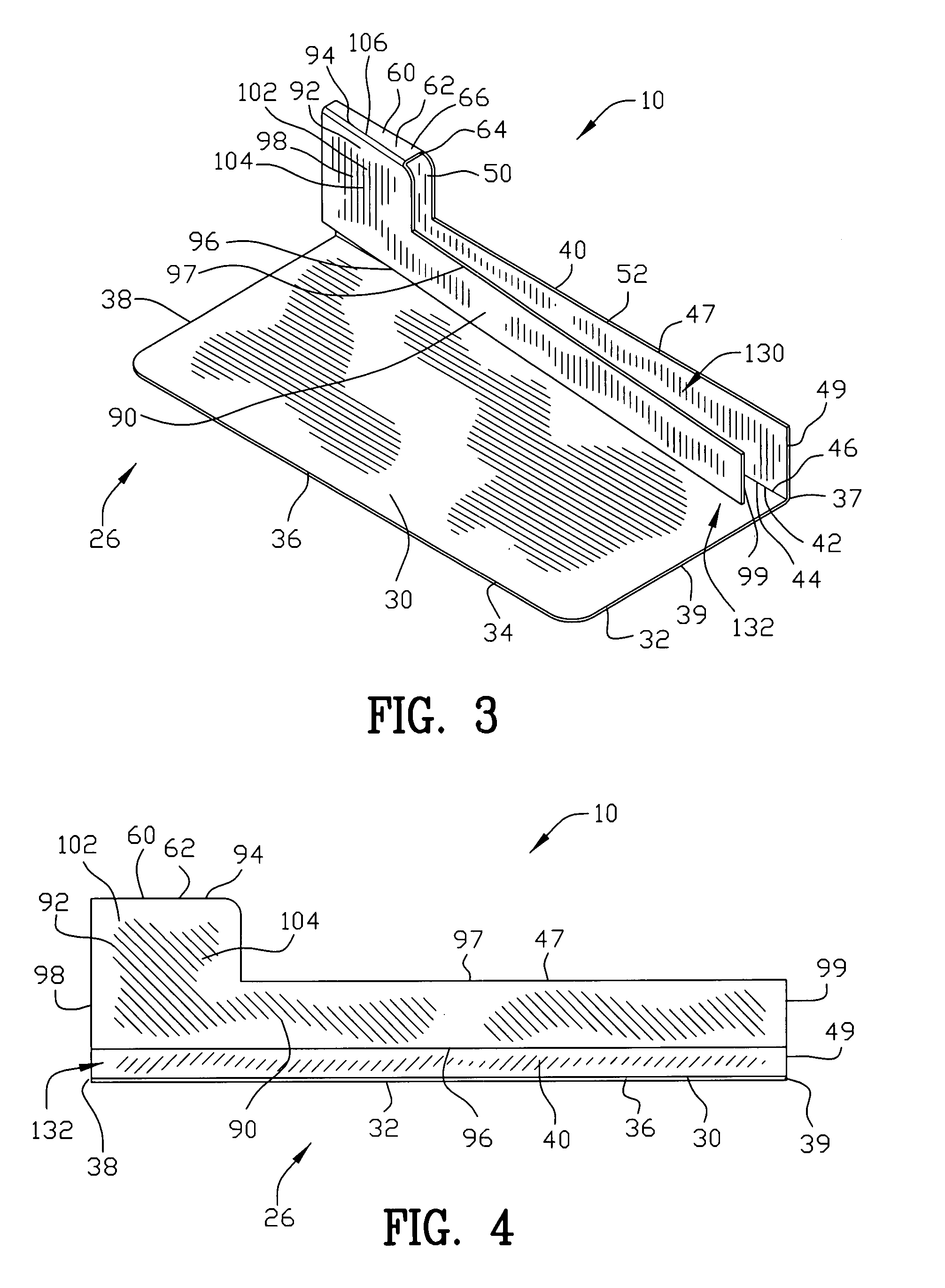Cutlery receptacle
a technology for receptacles and cutting boards, which is applied in the field of receptacles, can solve the problems that none of these prior art patents have solved the needs of this art, and achieve the effects of preventing blade horizontal displacemen
- Summary
- Abstract
- Description
- Claims
- Application Information
AI Technical Summary
Benefits of technology
Problems solved by technology
Method used
Image
Examples
first embodiment
[0083]FIGS. 1-10 are various views of a receptacle 10 for retaining a cutlery instrument 12. As best seen in FIG. 10 the cutlery instrument 12 includes a blade 14 and a handle 16. The blade 14 further includes a blade edge 18, a blade spine 20, a blade tip 22 and a blade heel 24.
[0084]The receptacle 10 comprises a base 30 having a base support surface 32 and a base engaging surface 34. The base 30 is shown having a rectangular shape defined by a first edge 36, second edge 37, third edge 38 and fourth edge 39. However, the base 30 may include other geometric shapes and dimensions. The base support surface 32 provides a surface for resting on an ambient surface 26. The base support surface 32 may be permanently mounted to an ambient horizontal surface 26 by a suitable mechanical fastener or an adhesive fastener. Alternatively, the base support surface 32 may merely rest upon the ambient surface 26 without any mechanical fastener or an adhesive fastener.
[0085]A wall member 40 is secure...
second embodiment
[0089]In the receptacle 10 illustrated in FIGS. 11-14, the coupling member 60 includes a front coupling member 72. The front coupling member 72 is secured to the wall member 40. The front coupling member 72 may be secured to the third edge 48 of the wall member 40. If the wall extender 50 is included to form the L-shaped wall member 52, the front coupling member 72 may be secured to the wall extender 50. The wall member 40 and the front coupling member 72 may be constructed of an integral one piece unit 74 including a ninety degree bend 76 positioned between the wall member 40 and the front coupling member 72 for maintaining the front coupling member 72 substantially perpendicular to the wall member 40. The integral one piece unit 74 including the ninety degree bend 76 is constructed from a metallic material by bending sheet metal, metallic material by casting molten metal, polymeric material by injection molding, or other materials and forms of manufacturing. As best seen in FIGS. ...
third embodiment
[0090]In the receptacle 10 illustrated in FIGS. 15-16, the coupling member 60 includes both the top coupling member 62 and the front coupling member 72. Both the top coupling member 62 and the front coupling member 72 are secured to the wall member 40. The top coupling member 62 may be secured to the second edge 47 of the wall member 40 and the front coupling member 72 may be secured to the third edge 48 of the wall member 40. If the wall extender 50 is included to form the L-shaped wall member 52, the top coupling member 62 and the front coupling member 72 may be secured to the wall extender 50. The wall member 40, the top coupling member 62 and the front coupling member 72 may be constructed of an integral one piece unit 80 including a first ninety degree bend 66 and a second ninety degree bend 76 positioned between the wall member 40 and the top coupling member 62 and the front coupling member 72 respectively. The integral one piece unit 80 including the first and second ninety d...
PUM
 Login to View More
Login to View More Abstract
Description
Claims
Application Information
 Login to View More
Login to View More - R&D
- Intellectual Property
- Life Sciences
- Materials
- Tech Scout
- Unparalleled Data Quality
- Higher Quality Content
- 60% Fewer Hallucinations
Browse by: Latest US Patents, China's latest patents, Technical Efficacy Thesaurus, Application Domain, Technology Topic, Popular Technical Reports.
© 2025 PatSnap. All rights reserved.Legal|Privacy policy|Modern Slavery Act Transparency Statement|Sitemap|About US| Contact US: help@patsnap.com



